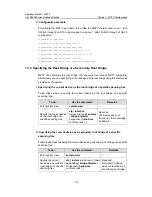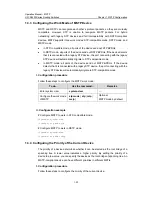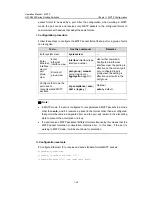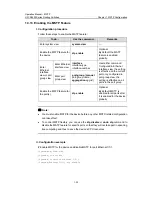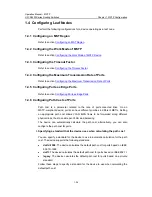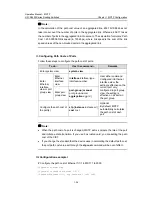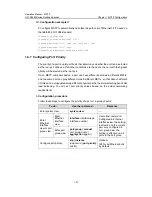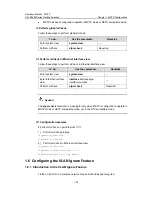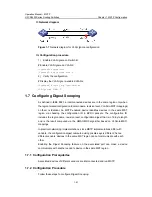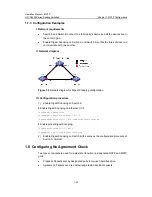
Operation Manual – MSTP
H3C S9500 Series Routing Switches
Chapter 1 MSTP Configuration
1-28
1.3.8 Configuring the Timeout Factor
After the network topology becomes stabilized, each non-root-bridge device forwards
configuration BPDUs to the adjacent devices at the interval of hello time to check for
faulty links. Typically, if a device does not receive a BPDU from the upstream device
within nine times the hello time, it assumes that the upstream device has failed and
starts spanning tree calculation.
In a stable network, you can avoid such unwanted spanning tree calculation by
lengthening the timeout time.
I. Configuration procedure
Follow these steps to configure the timeout factor:
To do...
Use the command...
Remarks
Enter system view
system-view
—
Configure the timeout
factor of the device
stp timer-factor number
Optional
3 by default
Note:
z
Timeout time = timeout factor × hello time.
z
Typically, we recommend that you set the timeout factor to 5, 6, or 7 for a stable
network.
II. Configuration example
# Set the timeout factor to 6.
<Sysname> system-view
[Sysname] stp timer-factor 6
1.3.9 Configuring the Maximum Transmission Rate of Ports
The maximum transmission rate of a port refers to the maximum number of MSTP
packets that the port can send within each hello time.
The maximum transmission rate of an Ethernet port is related to the physical status of
the port and the network structure.
I. Configuration procedure
Following these steps to configure the maximum transmission rate of a port or a group
of ports:








